
Using RA and dec. (Right Ascension and declination) coordinates, it is possible to locate a faint target that might otherwise be difficult to see in your viewfinder. With an undriven mount, you are limited to relatively short exposures, but with a fast lens and high ISO setting, impressive night-sky images are certainly achievable.
The mount's RA axis must be aligned with Earth's axis of rotation, so you must adapt the downloadable plans to suit your latitude. At the North or South Poles, the RA axis would point vertically upwards, and at the equator it would be horizontal. For most of us, the angle between the RA disc and the ground is somewhere in between (90° minus your latitude).
Wrangle the angles
The dec. assembly pivots on the RA disc, but it is clampable with a wing nut when you're ready to take a photo. Similarly, the camera platform pivots on the dec. assembly, also with a clamp. The dec scale is glued so that it reads 90° when the camera is pointing directly at the Pole. As the night sky appears to rotate, the RA scale must be free to turn, so you can adjust it. A strong bulldog clip holds it still while you move the dec. assembly between targets.
To use the mount, it must firstly be polar aligned. Make sure the base is level, with the RA disc facing due north (in the Northern Hemisphere). To fine-tune the alignment, you can place a smartphone (with a planetarium app) on the RA disc and centre the displayed south celestial pole.
Denne historien er fra June 2023-utgaven av BBC Sky at Night Magazine.
Start din 7-dagers gratis prøveperiode på Magzter GOLD for å få tilgang til tusenvis av utvalgte premiumhistorier og 9000+ magasiner og aviser.
Allerede abonnent ? Logg på
Denne historien er fra June 2023-utgaven av BBC Sky at Night Magazine.
Start din 7-dagers gratis prøveperiode på Magzter GOLD for å få tilgang til tusenvis av utvalgte premiumhistorier og 9000+ magasiner og aviser.
Allerede abonnent? Logg på

Putting cosmic rays to work
These penetrating interstellar particles have applications from astronomy to archaeology
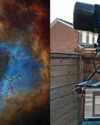
Set up your first imaging sequence
How to automate and coordinate your gear over multiple nights of imaging
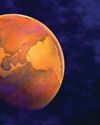
The Universe without gravity
Life with no gravity might sound a fun idea, but as Govert Schilling explains, shutting off this pivotalforce would spell disaster for Earth and beyond
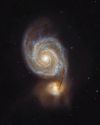
How to blend images taken with different camera setups
Combine data captured at varied focal lengths to create rich, deep images

INSIDE THE SKY AT NIGHT
Back in September 2021, The Sky at Night show spoke to Carly Howett about NASA's then upcoming Lucy mission. As the spacecraft now approaches its main targets - the Trojan asteroids - we check in with her to see how the mission is going
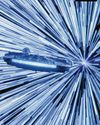
The science of SCI-FI
We love a good sci-fi film, but do they get the science right? Amy Arthur picks six of the big mistakes made in space films
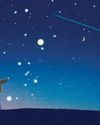
Seeing in a new light
It's National Astronomy Week this month, so take a tip from Mark Westmoquette and let mindful stargazing change your perspective on your life and problems
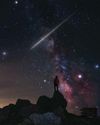
What to do if you find a meteorite
Ever come across an unusual rock and wondered if it's a meteorite? Mark McIntyre explains how to tell if that stone really is a fragment from outer space
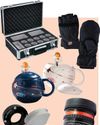
GEAR
Charlotte Daniels rounds up the latest astronomical accessories
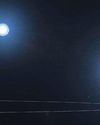
Q&A WITH A STELLAR ECLIPSE SPECIALIST
Many stars are gravitationally locked inside multi-star systems, but a rare new triple-star system has set a new record for how cosy these clusters can get